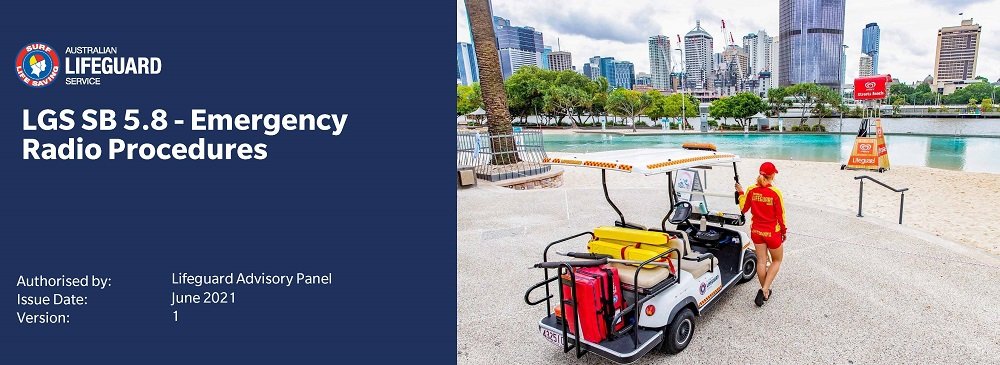
Introduction
Where a Lifeguard has recognised an emergency, they are to communicate with ‘Control’ via radio communications.
Procedure
When using a radio to transmit in a non-life-threatening emergency the radio procedures are as follows: Stay Calm over the radio and state the following:
- Lifeguard Callsign
- Position
- Problem/People
- Assistance required
i.e. “Lifeguard 9 to ‘control’ details of Incident when ready”, Wait for response from control to relay Information, I’m at Riverside Green, requesting an ambulance for a 40-year-old female suffering from chest pains and difficulty breathing, patient is currently conscious, with no medical history and currently on oxygen therapy, not displaying any Covid symptoms and hasn’t been in a hotspot.”
When using the radio to transmit in life threatening situation (refer to LGS SB 5.07 Radio Communications ) the radio procedures are as follows:
Stay calm and use rescue, rescue, rescue with as much information as possible.
e.g. Rescue, Rescue, Rescue, this is Lifeguard 2, on the main beach, 1 Caucasian male, unconscious, not breathing, CPR in progress, requiring defib, oxygen and QAS assistance.
Upon hearing this ‘Control’ will organise the appropriate assistance and will only request more information if absolutely necessary.
Receiving a call
When receiving a call over the radio from other staff (Security, Cleaners, Maintenance, Gardeners, S.B.V.C. or events staff), Lifeguards are to obtain details over the radio before delegating responsibility in order to determine the current situation and whether the incident is life threatening.
Procedure
Details are as follows:
- Ask ‘what is wrong with patient’
- Conscious / Unconscious (Responsive/Non-Responsive)
- Bleeding Badly – Yes/No
- Covid check list questions ( flu like symptoms, quarantine, hotspots?)
- Any other relevant information



Post your comment on this topic.